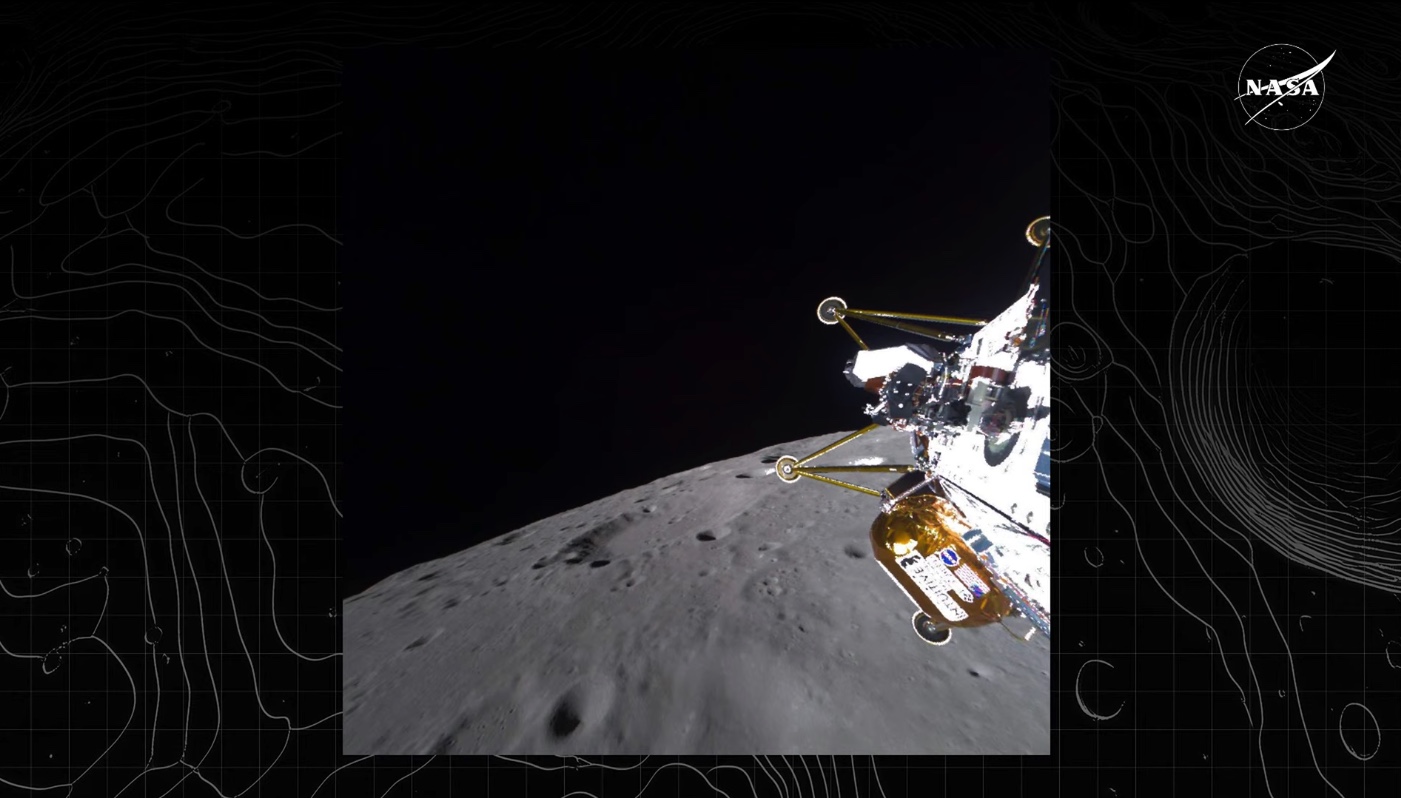
How IM-2 payload operators made the most of the mission’s landing issues
How did your country report this? Share your view in the comments.
Diverging Reports Breakdown
Original Coverage: How IM-2 payload operators made the most of the mission’s landing issues
Intuitive Machines’ second lunar lander mission, IM-2, fell on its side. The payloads on the mission operated briefly before low power levels led Intuitive Machines to end the mission. There was not enough bandwidth to collect images from a camera provided by MIT on the rover. A second MIT payload called AstroAnt could not operate, but a third payload, HUMANS, was a success. on the moon, so we’re happy,” said Forrest Meyen, chief strategy officer of Lunar Outpost, one of IM’s customers. “We completely reduced a lot of risk for future missions.” “This mission demonstrates this virtuous loop that we have now,’ said Nathan Perry, another IM customer. ‘Even at these higher risk levels, we still moving things forward.’ “Making lunar lemons from lemons” in the May 2025 issue of SpaceNews Magazine with the title “Lunar Lemons from Lemons’ Magazine’“We are ready for the next mission,“ MeyEN said. � ‘We are less of a problem child’, said Maya Nasr, who created
Intuitive Machines’ IM-2 Moon lander is lying dead in a crater
The Athena lander toppled over in the shadow of a crater around 820 feet (200 meters) from its intended landing site. The company said its batteries had run out and they did not expect it to reawaken. It was Intuitive Machine’s second rough Moon landing after last year’s Odysseus lander broke a leg and settled on the Moon’s surface at an angle. That mission also ended early as its solar panels couldn’t be oriented directly at the Sun, but it operated on the surface for six days. On the bright side, Intuitive Machines is planning to send its IM-3 mission to the Reiner Gamma region of the Moon with four NASA payloads, as well as a rover and relay satellite. It could launch as early as next year. The IM-2 mission had gone according to plan after launching from Kennedy Space Center in Florida on Feb. 26, the lander reached lunar orbit before descending to its destination, the plateau atop Mons Mouton. But upon landing, the mission’s team had trouble determining the craft’s orientation and where it landed in the region. A transmitted image showed the craft lying on its side, partly in shadow, with two of its legs sticking
Athena spacecraft declared dead after toppling over on moon | Space | The Guardian
Athena, a probe launched by the Texas-based company Intuitive Machines (IM) last month, touched down about 250 meters from its intended landing site near the moon’s south pole on Thursday. Initially at least, it was generating some power and sending information to Earth as engineers worked to make sense of data showing an “incorrect attitude” On Friday, however, IM declared Athena dead. “With the direction of the sun, the orientation of the solar panels, and extreme cold temperatures in the crater, Intuitive. Machines does not expect Athena to recharge,” it said in a statement confirming that the 15ft (4.6-meter) spacecraft was on its side. The failure of Athena, which was packed with scientific probes and experiments that Nasa was relying on as it prepares to send astronauts back to the moon for the first time since 1972, was almost identical to IM”s first moon landing in February 2024. The Odysseus spacecraft became the first private mission to reach the moon, but skidded across the surface, broke a leg and toppled over. Athena had the same tall, thin design that some experts had feared could lead to a repeat of the accident.
Athena moon mission comes to early end after lander tips over in off-target touchdown in a crater
Intuitive Machines’ Athena lander landed in a crater near the lunar south pole. Given a low sun angle and the orientation of the lander’s solar cells, the spacecraft’s battery quickly drained. “Images downlinked from Athena on the lunar surface confirmed that Athena was on her side,” the company said. The company’s first moon lander, named Odysseus, touched down on the moon last year, but it hit the surface harder than expected and a landing leg failed. and ended up on its side and unable to complete its mission.”This southern pole region is lit by harsh sun angles and limited direct communication with the Earth,” Intuitive Machines said on its web page. “This area has been avoided due to its rugged terrain and Intuitive believes the insights and achievements from IM-2 will open this region for further space exploration,” it said in a statement on its website. The landing mishap was the second such disappointment for Intuitive machines, which is based in Austin, Texas, and is owned by Japan’s Nippon Aerospace and Space Corporation, a subsidiary of SoftBank. and South Korea’s KMS Group, which owns the rights to the “Star Trek” series of movies and TV shows.
Global Perspectives Summary
Global media portray this story through varied cultural, economic, and political filters. While some focus on geopolitical ramifications, others highlight local impacts and human stories. This diversity of coverage reflects how national perspectives influence public understanding.
Sources
- Original: How IM-2 payload operators made the most of the mission’s landing issues
- Intuitive Machines’ IM-2 Moon lander is lying dead in a crater
- Athena spacecraft declared dead after toppling over on moon | Space | The Guardian
- Athena moon mission comes to early end after lander tips over in off-target touchdown in a crater
Source: https://spacenews.com/how-im-2-payload-operators-made-the-most-of-the-missions-landing-issues/

